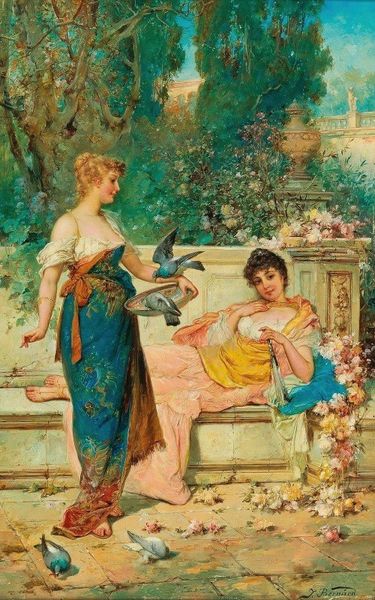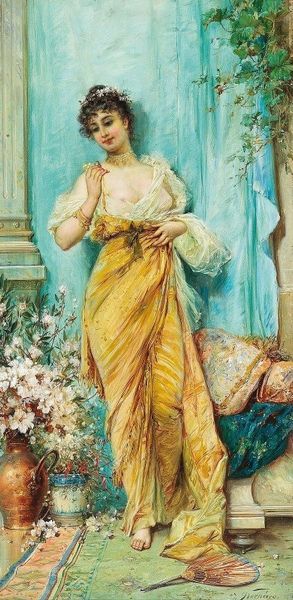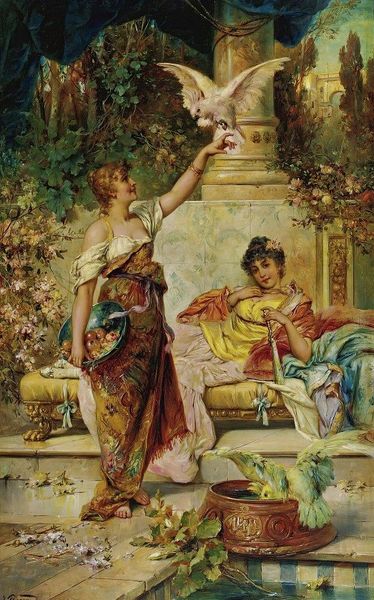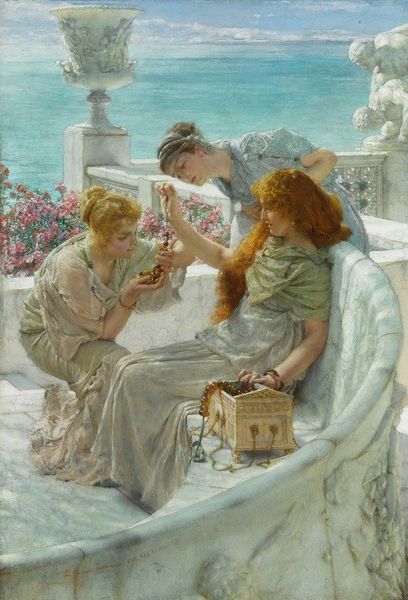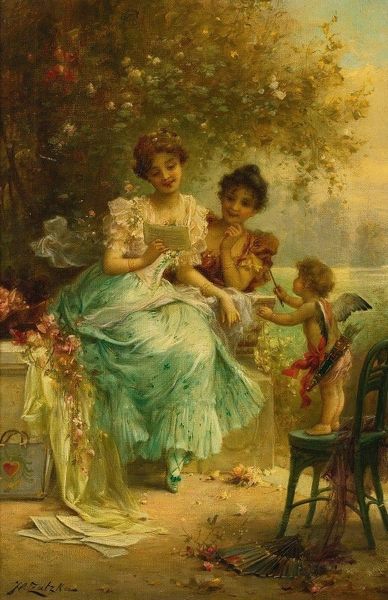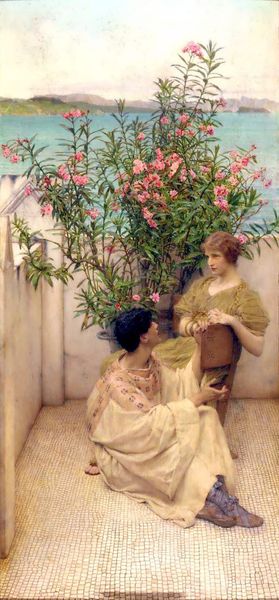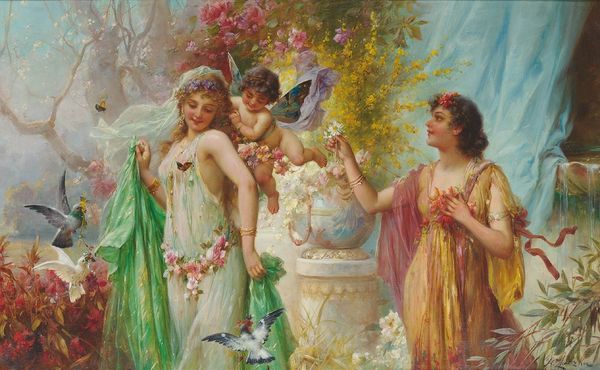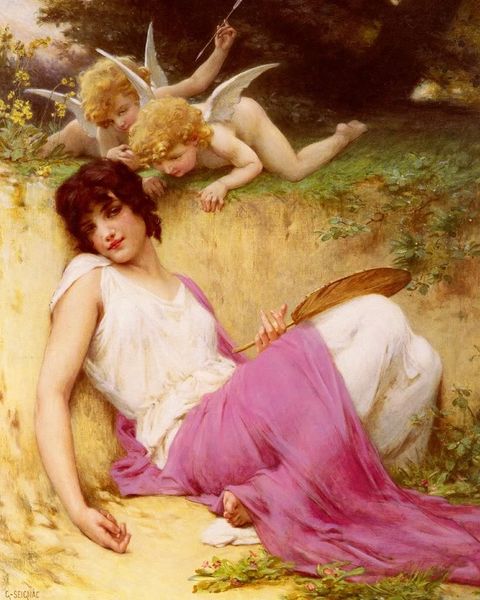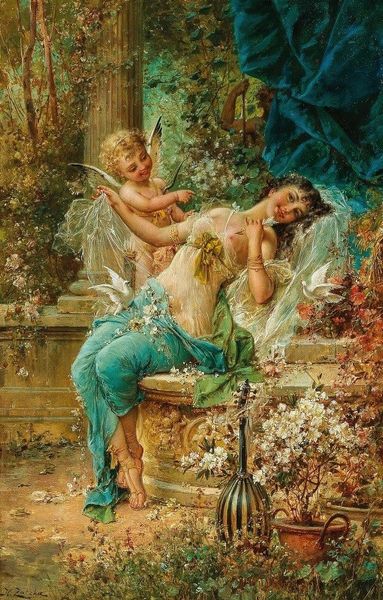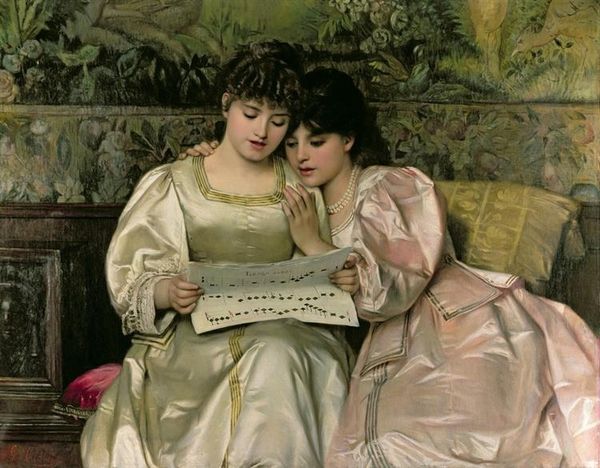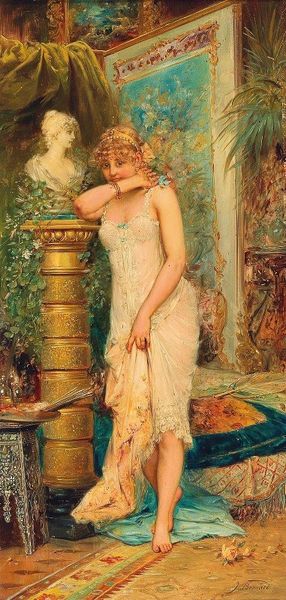
painting, oil-paint
#
portrait
#
figurative
#
allegory
#
painting
#
oil-paint
#
figuration
#
oil painting
#
romanticism
#
genre-painting
#
academic-art
Copyright: Public Domain: Artvee
Curator: The oil painting before us is titled "A Merry Tune," created by Hans Zatzka. My initial reaction is to see it as embodying idealized leisure, possibly concealing a more complex discourse about gender roles and performativity in that historical moment. Editor: It does radiate an aura of idealized beauty. The soft light, the flowing fabrics, the musical instruments…they evoke a very specific kind of carefree joy. Notice how Zatzka uses symbolic elements from earlier traditions, such as the decorative lion head and what looks like an archaic marble wall. Do these echo classical antiquity? Curator: Exactly. Understanding Zatzka’s artistic position reveals how these aesthetic choices are politically charged. He perpetuates very specific representations, framing femininity through a patriarchal lens and, by romanticizing this past, ignores the lived realities of diverse individuals during his time. Editor: So you read the choice of instruments as representative of a structured dynamic, perhaps even social boundaries? One figure plays a lute while the other readies her tambourine... instruments associated with different cultural traditions, too. The lute with courtly love, the tambourine with folk music and dance... Curator: Indeed, especially since these figures don’t simply exist as themselves. The very setting feels constructed. That is what lends a sense of allegory rather than direct representation. Zatzka has composed the figures as though arranging players in a theatrical tableau, thereby shaping our reading and restricting possibilities for free interpretation. Editor: The positioning also seems interesting in light of art historical references: One musician is reclining like a Renaissance muse while the other prepares to offer her percussive melody to the garden scene. What strikes me, however, is the lack of true engagement between the two. Their expressions lack a personal quality, almost vacant. Curator: Vacancy that, I argue, demands critical deconstruction. As beholders, we need to resist aestheticizing works such as this, seeing them instead as reflections of specific biases woven within socio-political fabrics of earlier times. The beautiful and accomplished rendering of light and shadow serve to veil some critical aspects of reality. Editor: Yes, the symbolism feels poised to open into many further readings... considering what's present, or rather absent. Well, it has certainly offered an insightful opportunity to reflect critically on what it means to celebrate "beauty". Curator: Agreed, examining art’s impact over time demands we acknowledge its varied reception across historical conditions and from today’s vantage points.
Comments
No comments
Be the first to comment and join the conversation on the ultimate creative platform.
